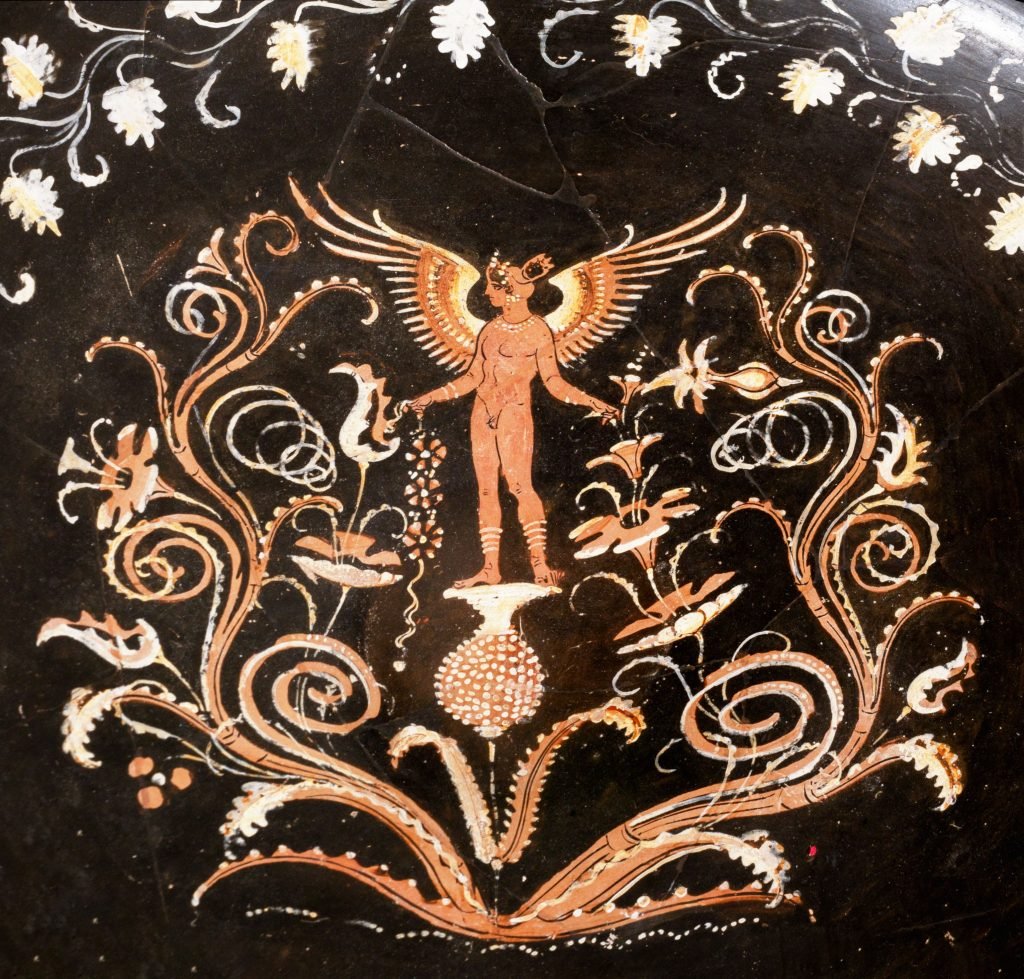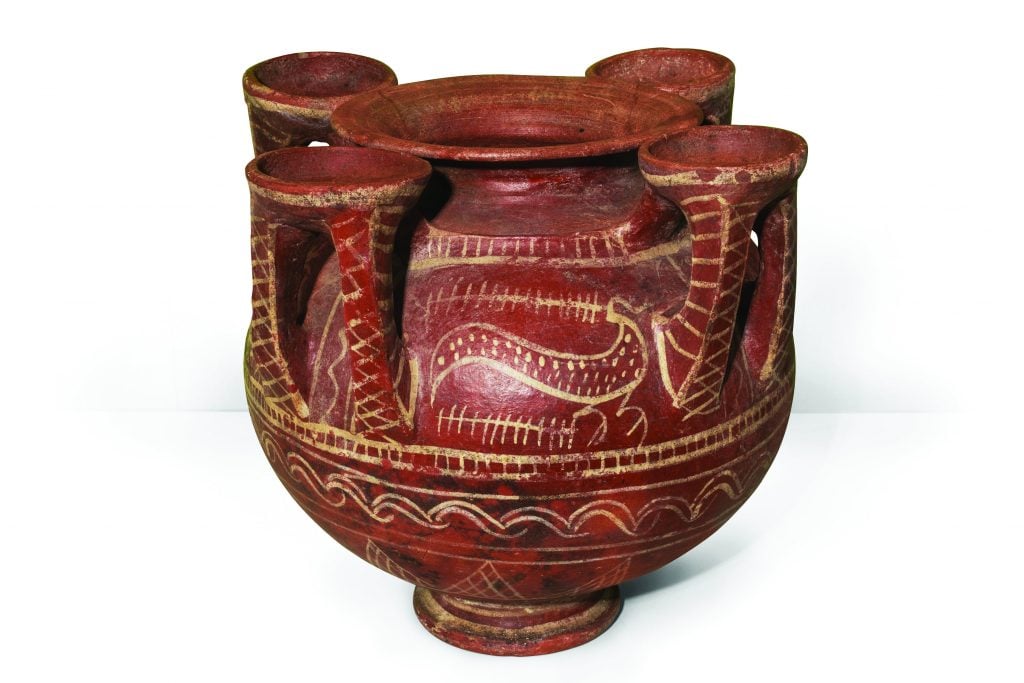Museums & Institutions
Italy Opens the Museum of Rescued Art, Dedicated to Cultural Heritage the Country Reclaimed From Abroad
The museum will mount rotating exhibitions of repatriated art.

The museum will mount rotating exhibitions of repatriated art.

Amah-Rose Abrams

In a triumphant stride toward its effort to retrieve its cultural heritage Italy has opened a museum to house art it has rescued. The museum, which opened in Rome this week, will stage rotating exhibitions of looted and stolen pieces that the country has reclaimed.
The Museum of Rescued Art, which is housed within the National Roman Museum in the Baths of Diocletian, opened with an exhibition of 100 artifacts, including a number of important ceramics that had been reclaimed by the country’s “art squad.”
All the items were seized in the U.S. and returned last year. A fresh selection of pieces will go on view after the current show closes on October 15.

A selection of atrifacts on view at the museum. Plate with two red-figure handles of Apulian production with Eros emerging from a flower. Around the middle of the 4BC. Photo Courtesy Museo Nazionale Romano.
“Stolen artworks and archaeological artifacts dispersed, sold, or illegally exported constitute a significant loss to a country’s cultural heritage and the expression of its historical memory and collective values, not to mention the identity of its people,” said Dario Franceschini, Italy’s minister of culture, in a statement.
“Despite its intrinsic intangible value, rather than being worth safeguarding, protecting and preserving, cultural heritage has often been targeted for illicit trafficking and material destruction. It is no coincidence that during international conflicts, aggressors frequently, intentionally, and deliberately damage cultural heritage, striking at the very roots of the enemy country’s identity.”

Ceremonial krater with four handles surmounted by red impasto ceramic cups overpainted white
7BC. Photo Courtesy Museo Nazionale Romano
The museum is intended to showcase the success of Italy’s diplomatic efforts to repatriate antiquities from foreign museums and private collections abroad. Italy’s operations to repatriate and protect its cultural heritage include the “art squad,” the Carabinieri Command for the Protection of Cultural Heritage, and the “Culture Blue Helmets,” which work with UNESCO to help recover items after natural disasters and conflict around the world.
Last year, Italy negotiated with Greece to return a stone from the eastern frieze of the Parthenon in exchange for a statue of Athena.
“Protecting and enhancing these riches is both an institutional duty and a moral commitment: We must take on this responsibility towards future generations so that, through these artifacts, they are able to preserve identity-related values and acknowledge a shared cultural history,” said Franceschini.